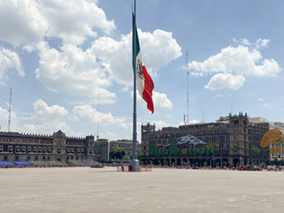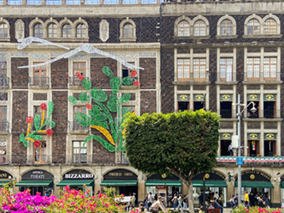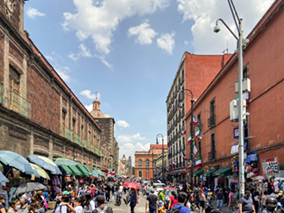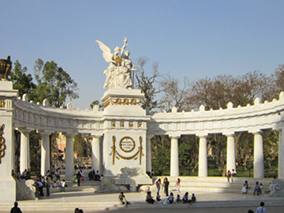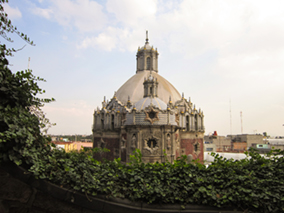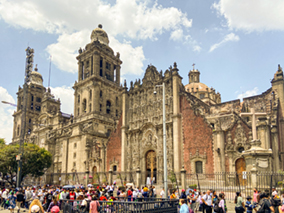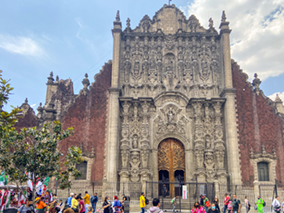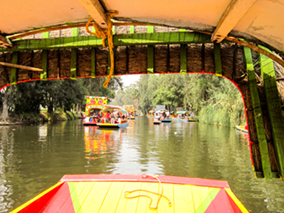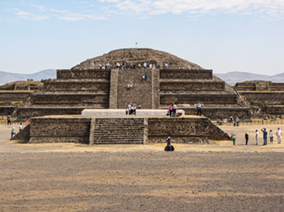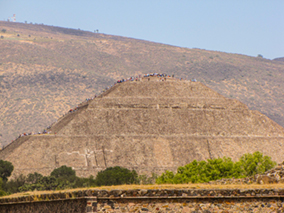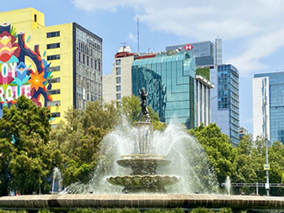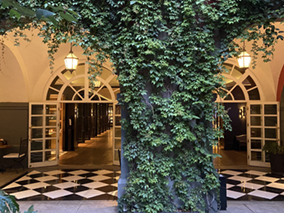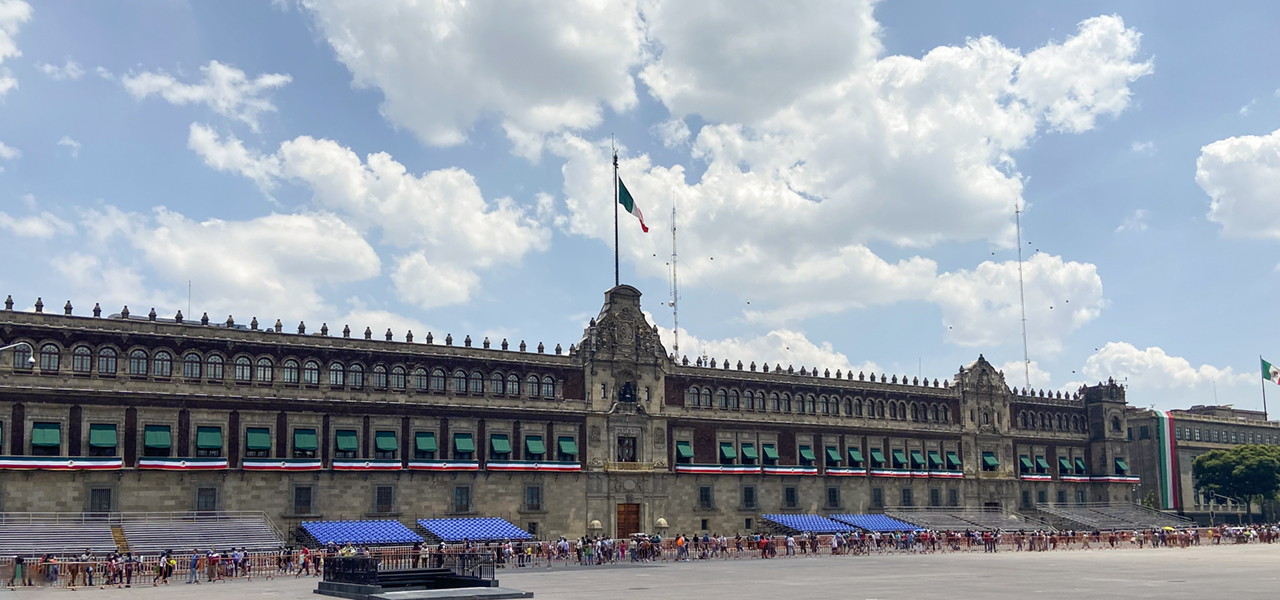


Ciudad de Mexico
This page is dedicated to Mexico City!
Mexico City is the densely populated, high - altitude capital of Mexico. It’s known for its Templo Mayor (a 13th - century Aztec temple), the baroque Catedral Metropolitana de Mexico of the Spanish conquistadors and the Palacio Nacional, which houses historic murals by Diego Rivera. All of these are situated in and around the Plaza de la Constitución, the massive main square also known as the Zócalo

The Plaza de la Constitución , informally known as the Zócalo , is the main square in Mexico City . Together with the surrounding streets, it occupies an almost rectangular area of approximately 46,800 m² (195 m × 240 m). It was named in honor of the Constitution of Cádiz promulgated in 1812. This is the second largest square in the world and the first among Spanish - speaking countries.
Mexico’s flag has three vertical stripes. The left green stripe stands for hope, the middle white stripe represents purity, and the right red stripe represents the blood of those who died fighting for Mexico’s independence. The picture of an eagle eating a snake is based on an Aztec legend
The Zócalo is located in the heart of the area known as the historic center of Mexico City , in the Cuauhtémoc demarcation. Its location was chosen by the Spanish conquerors to be established right next to what was previously the political and religious center of Mexico - Tenochtitlan , capital of the Mexicas.
Mexico City (Ciudad de Mexico in Spanish) is the capital city of Mexico and one of the most important political, cultural, educational and financial centres in North America. It is ranked as the eighth richest city in the world. Settling on an altitude of more than 2,000 metres, tourists are instantly enamoured by the city‛s glamour, cultural heritage and contemporary development. Every corner of the city is sprinkled with stories to tell of famous personalities and ancient tribes. While the Aztecs discovered and gave the city its culture and heritage, the Spanish revamped and added their touch. Here are a few images of The Basilica of Our Lady of Guadalupe; the Palace of Fine Arts; Monumento a la Revolución the largest triumphal arch in the world and some others.

The Catedral Metropolitana de Mêxico
The Metropolitan Cathedral of the Assumption of the Most Blessed Virgin Mary into Heaven is the cathedral church of the Roman Catholic Archdiocese of Mexico. It is situated on top of the former Aztec sacred precinct near the Templo Mayor on the northern side of the Plaza de la Constitución (Zócalo) in the historic center of Mexico City. The cathedral was built in sections from 1573 to 1813 around the original church that was constructed soon after the Spanish conquest of Tenochtitlan, eventually replacing it entirely. Spanish architect Claudio de Arciniega planned the construction, drawing inspiration from Gothic cathedrals in Spain. Due to the long time it took to build it, just under 250 years, virtually all the main architects, painters, sculptors, gilding masters and other plastic artists of the viceroyalty worked at some point in the construction of the enclosure. The long construction time also led to the integration of a number of architectural styles in its design, including the Gothic, Baroque, Churrigueresque, Neoclassical styles, as they came into vogue over the centuries. It furthermore allowed the cathedral to include different ornaments, paintings, sculptures and furniture in its interior. The project was a point of social cohesion, because it involved so many generations and social classes, including ecclesiastical authorities, government authorities, and different religious orders.

Chapultepec Castle
Chapultepec Castle is located on top of Chapultepec Hill in Mexico City’s Chapultepec park. The name Chapultepec is the Nahuatl word chapoltepec which means ”on the hill of the grasshopper”. It is located at the entrance to Chapultepec park, at a height of 2,325 metres above sea level. The palace houses the National Museum of History, which showcases impressive murals and stunning stained glass galleries. You can also take a leisurely stroll through the castle's manicured gardens and enjoy the panoramic views of downtown. Make sure to set aside enough time to relax and enjoy the sprawling Chapultepec Park nearby, too. It is the only castle to house royalty in North America. Eventually, after its completion and numerous attempts on the part of the Spanish Crown to sell the Castle at a cut price, Mexico City’s municipal government purchased it in 1806. Despite being abandoned during the War of Independence, the Castle rose to notoriety once again when it became the site of the deaths of six young men-immortalized as the Niños Héroes (Hero Children) - who died defending it in 1847 during the Mexican-American war.
Xochimilco
In southern Mexico City, a gritty working-class neighborhood gives way to the famous canals of Xochimilco, the last remnants of a vast water transport system built by the Aztecs. Colorful gondola-like boats take visitors on cruises while food vendors, artisans and mariachi bands float past. The atmosphere is festive, especially on weekends. Tourists can also visit the eerie, purportedly haunted Island of the Dolls.
San Juan Teotihuacán Pyramids
Teotihuacan is a vast Mexican archaeological complex northeast of Mexico City. Running down the middle of the site, which was once a flourishing pre-Columbian city, is the Avenue of the Dead. It links the Temple of Quetzalcoatl, the Pyramid of the Moon and the Pyramid of the Sun, the latter two with panoramic views from their summits. Artifacts in the Museum of Teotihuacan Culture, on-site, include pottery and bones. The largest pyramid in the world is the Great Pyramid of Cholula in Mexico. It is also the largest monument ever constructed in the world. I am not sure if you can climb the temples anymore, but a couple years ago when we visited it was allowed. Teotihuacán is located only 30 miles (50 km) away from Mexico City. It is unknown who exactly built the city back in the 400 B.C. range as there are components of different cultures including Maya, Zapotec, and Mixtec. Just a few steps away from the Teotihuacan Pyramids, La Gruta Restaurant is one of the most traditional and impressive places in the area. Here you will get the chance to taste delicious dishes that mix local cuisine ingredients with pre-Hispanic culinary heritage, and enjoy traditional Mexican folk dance shows...
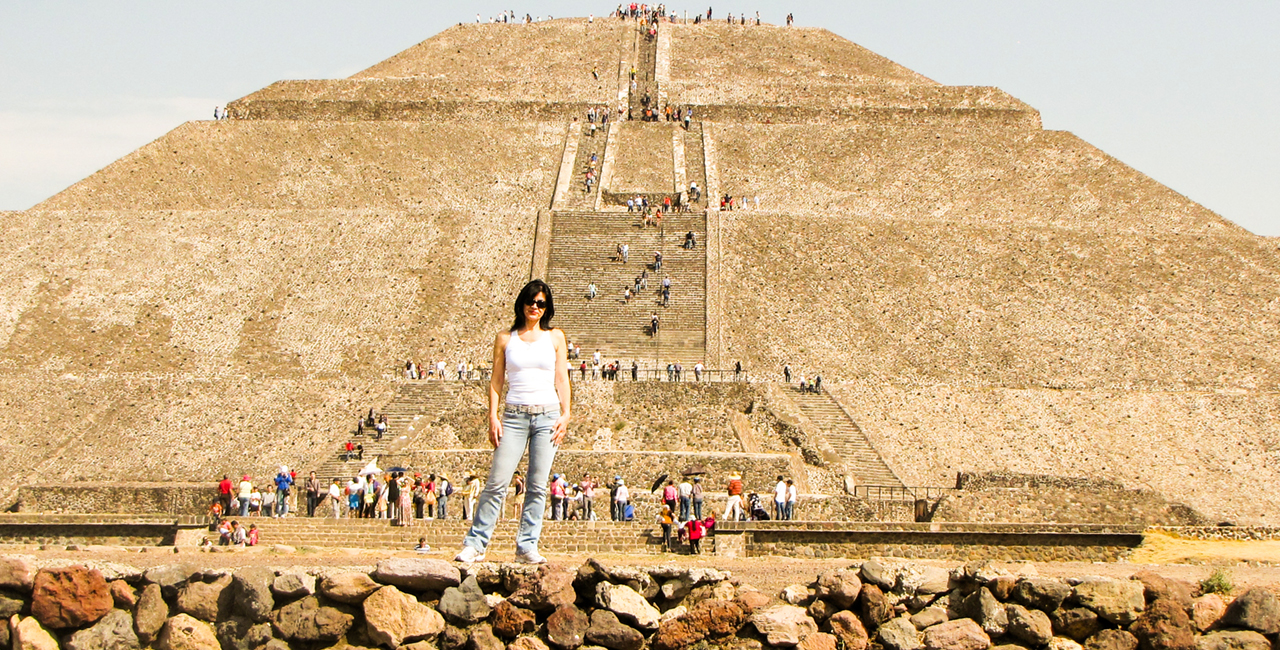
The Mariachi de Mexico...

The Mariachi was the distinctive version of the Spanish theatrical orchestra of violins, harp and guitars which developed in and around Jalisco.


And a few more for the end...
Mexico is a country known for its diversity in all aspects: culture, landscape, history, music, dance and many others
No wonder it was one of the biggest attractions and destinations for many famous writers, artists, musicians, actors, business people and just humble people from all over the world.
It simply makes you feel at home being welcomed by natives whose big smiles take away your worries and always leave you with nice and happy memories. I’m not famous but I'm happy that Mexico was my first visit outside of the USA and it has remained my favorite get away place.
